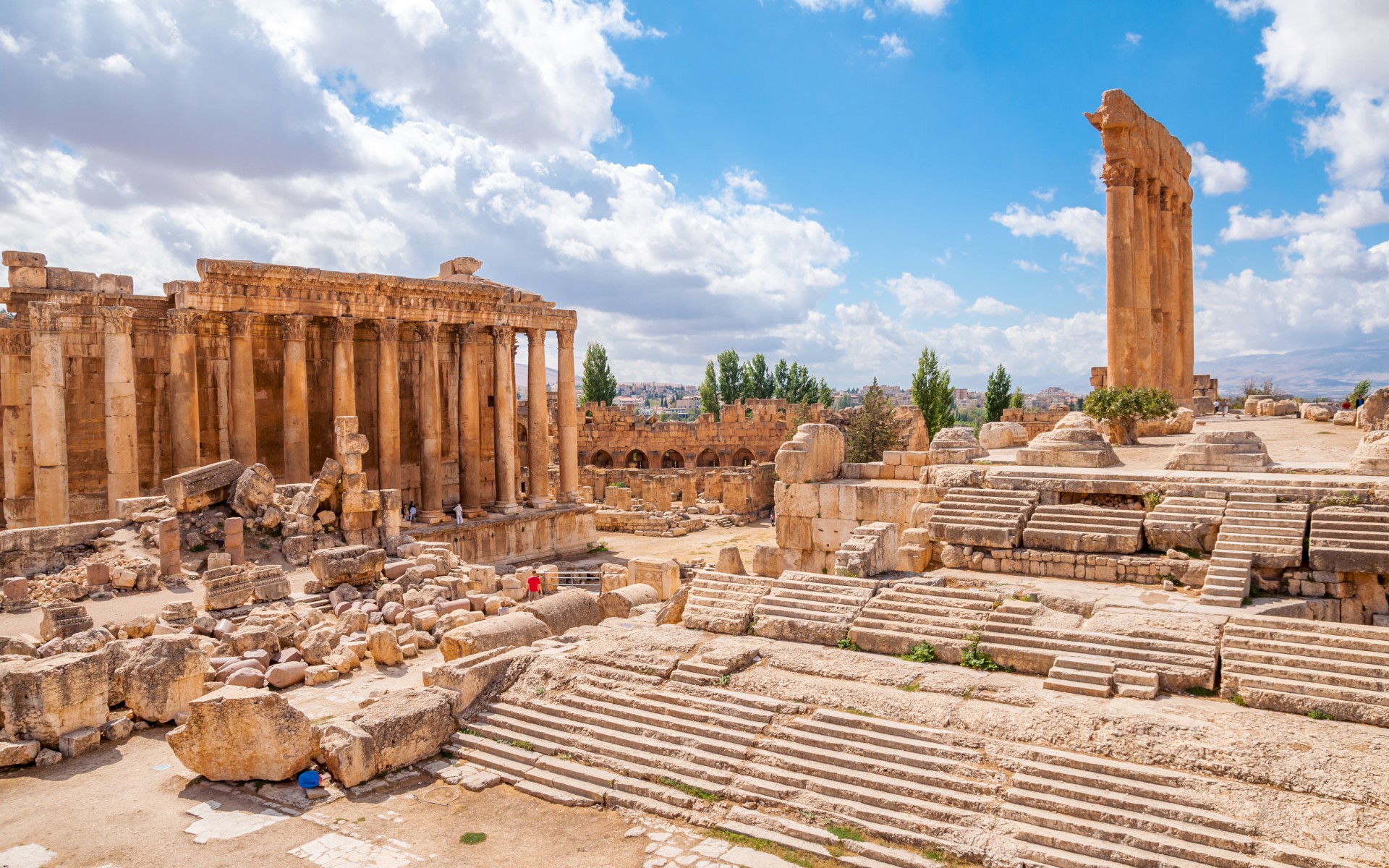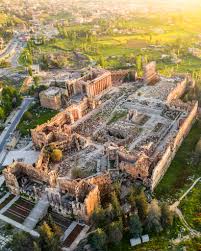



Baalbek is a city located east of the Litani River in Lebanon's Beqaa Valley, about 67 km northeast of Beirut. It is the capital of Baalbek-Hermel Governorate. In 1998, the city had a population of 82,608. Wikipedia
Known for: Gigantic Roman temples (Jupiter, Bacchus, Venus), archaeological marvels, cultural festivals
Location: Eastern Lebanon, ~85 km (53 miles) northeast of Beirut — ~2.5 hours by car
Spring (April–June): 🌸
✅ Best weather — mild temperatures and lush Beqaa greenery
✅ Perfect for photography and long site walks
Fall (September–October): 🍂
✅ Cool, clear, and quiet — post-summer serenity
Summer (July–August): ☀️
🔥 Hot but dry (~30–35°C); busiest during Baalbek International Festival
Winter (November–March): ❄️
🌧️ Cold, possibly snowy; ruins still open but less pleasant for walking
🚗 By Car (Best Option):
~2.5 hours from Beirut via Dahr el-Baidar highway and the Beqaa Valley road
Scenic drive, passing vineyards and mountains
Parking is available near the temple complex
🚌 By Bus (Adventure Option):
Minibuses from Beirut’s Cola Transport Hub to Zahlé, then transfer to Baalbek
Inexpensive but less comfortable and slower
Best for experienced travelers
🚕 Private Driver or Tour:
~$80–120 round trip
Recommended for safety, convenience, and flexibility
Many day tours combine Baalbek with Ksara winery or Anjar ruins
Among the most impressive Roman ruins outside of Rome:
Temple of Jupiter – once the largest Roman temple ever built
Only a few of its massive columns (22m high) still stand, but their scale is breathtaking
Temple of Bacchus – incredibly well preserved, with detailed carvings, columns, and steps intact
Often surprises visitors by how massive and complete it is
Temple of Venus – smaller, circular temple with elegant design
Located slightly to the south of the main site
Enormous cut stone block near the temple complex — one of the largest single stones ever quarried (~1,000+ tons)
A testament to ancient engineering
🏛️ Explore the temple complex with or without a guide
📸 Take panoramic shots of the columns and carvings
🧠 Learn about Phoenician, Greek, Roman, and Islamic influences
🧺 Have a local lunch at a family-run Beqaa restaurant
🍷 Visit nearby Ksara, Kefraya, or Massaya wineries
Most travelers visit Baalbek on a day trip, but if you stay overnight:
Palmyra Hotel Baalbek – historic 19th-century hotel with stunning views of the ruins (stayed at by De Gaulle, Einstein, and more)
Baalbek Hotel – newer, budget-friendly option
Zahlé (1 hour away) also offers comfortable lodging with more options
Kibbeh nayeh (raw minced meat with bulgur)
Sfiha Baalbakiyeh (mini meat pies)
Mezze platters – hummus, tabbouleh, labneh, fatayer
Arak (local aniseed spirit) with water and ice
Palmyra Hotel Restaurant – classic Lebanese food with a view of the temples
Al Shams Restaurant – well-known spot offering traditional mezze and grilled meats
Delicious local bakeries throughout town
Baalbek has Phoenician origins, was renamed Heliopolis (City of the Sun) by the Greeks, and transformed by the Romans
Deep Shia Muslim roots, visible in local traditions and shrines
Warm, welcoming locals proud of their town’s legacy
Famous for the Baalbek International Festival — held in the ruins, featuring world-class artists and musicians (often in July/August)